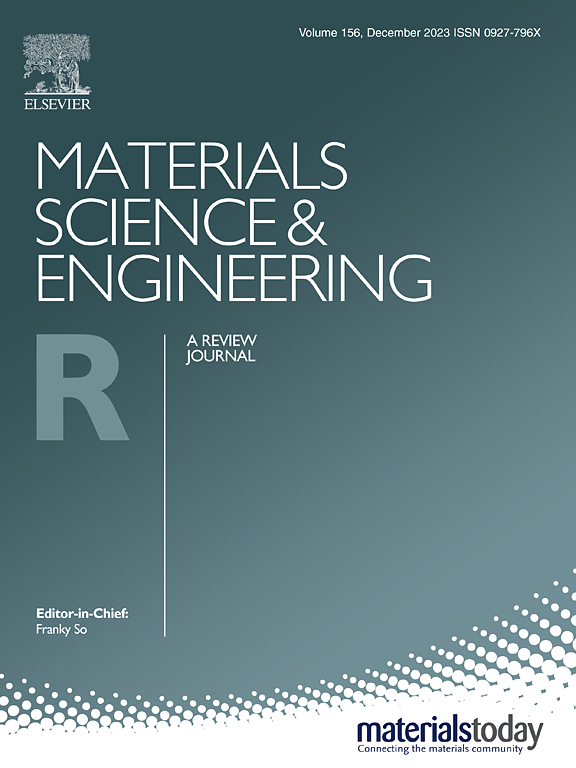Rational design of two-dimensional MXene-based materials for lithium-sulfur batteries
IF 31.6
1区 材料科学
Q1 MATERIALS SCIENCE, MULTIDISCIPLINARY
引用次数: 0
Abstract
The proliferation of portable electronics has intensified the demand for high-energy-density, safe electronic devices. Lithium-sulfur batteries (LSBs) have emerged as a promising solution due to their high theoretical energy density (2600 Wh kg−1), abundant sulfur resources, and cost-effectiveness. However, several challenges, including the inherent low electrical conductivity of sulfur, sluggish reaction kinetics of lithium polysulfides (LiPSs), and the severe shuttle effect, hinder the commercialization of LSBs. MXene-based materials, known for their high conductivity, strong lithophilicity, and mechanical strength, offer potential solutions to these issues. This review summarizes recent advancements in the application of MXene materials in LSB components, including methods for synthesizing and modifying MXene surfaces. The impact of these modifications on the electrochemical performance of LSBs is discussed, with particular emphasis on how MXene composites can enhance the performance of both electrodes and separators. Additionally, the application of MXene in lithium sulfide (Li2S) cathodes is explored, highlighting both opportunities and challenges. By integrating MXene into LSB systems, this review contributes to advancing the development of high-performance, sustainable energy storage solutions.
锂硫电池二维mxene基材料的合理设计
便携式电子产品的普及加剧了对高能量密度、安全的电子设备的需求。锂硫电池(LSBs)由于其高理论能量密度(2600 Wh kg−1)、丰富的硫资源和成本效益而成为一种有前途的解决方案。然而,硫固有的低导电性、锂多硫化物(LiPSs)反应动力学缓慢以及严重的穿梭效应等挑战阻碍了lsb的商业化。mxene基材料以其高导电性、强亲石性和机械强度而闻名,为这些问题提供了潜在的解决方案。本文综述了近年来MXene材料在LSB组件中的应用进展,包括MXene表面的合成和改性方法。讨论了这些修饰对lsb电化学性能的影响,特别强调了MXene复合材料如何提高电极和分离器的性能。此外,探讨了MXene在硫化锂(Li2S)阴极中的应用,强调了机遇和挑战。通过将MXene集成到LSB系统中,本综述有助于推进高性能、可持续能源存储解决方案的开发。
本文章由计算机程序翻译,如有差异,请以英文原文为准。
求助全文
约1分钟内获得全文
求助全文
来源期刊

Materials Science and Engineering: R: Reports
工程技术-材料科学:综合
CiteScore
60.50
自引率
0.30%
发文量
19
审稿时长
34 days
期刊介绍:
Materials Science & Engineering R: Reports is a journal that covers a wide range of topics in the field of materials science and engineering. It publishes both experimental and theoretical research papers, providing background information and critical assessments on various topics. The journal aims to publish high-quality and novel research papers and reviews.
The subject areas covered by the journal include Materials Science (General), Electronic Materials, Optical Materials, and Magnetic Materials. In addition to regular issues, the journal also publishes special issues on key themes in the field of materials science, including Energy Materials, Materials for Health, Materials Discovery, Innovation for High Value Manufacturing, and Sustainable Materials development.
 求助内容:
求助内容: 应助结果提醒方式:
应助结果提醒方式:


